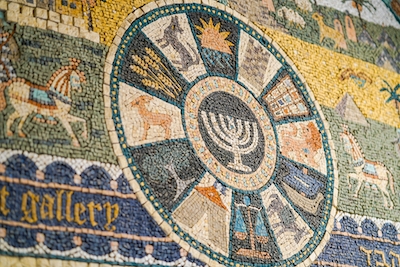Passover is among the most celebrated of all Jewish holidays, and it also requires by far the most extensive preparations. Alongside the typical holiday preparations of cooking meals and house cleaning, the custom on Passover is to rid the house entirely of leavened products, known as hametz. This practice is rooted in the Torah, which not only requires Jews to refrain from consuming leavened products for the duration of the holiday, but mandates that such products be removed from the home entirely.
The basic practice today is to thoroughly clean the home of all leavened products and sell anything that is too costly or onerous to remove. Then, many Jews will kasher their kitchens, covering surfaces and ritually preparing cookware and utensils, most commonly by immersion in boiling water, to render them permitted for use on the holiday. Some opt to put away their year-round dishes and cookware and use replacement items designated for Passover. Practices around house preparation can vary widely depending on family custom and fidelity to Jewish law. Several kosher authorities also produce guides and videos for those seeking more detail.
Getting Clean
The most basic and essential step in readying a house for Passover is to clean it of all possible crumbs of hametz. In the context of Passover cleaning, this typically entails more than routine washing of surfaces and organizing clutter. Some Jews will search the folds of sofas, scrub the shelves of the refrigerator, run a self-cleaning cycle on the oven, and even turn out coat pockets and fan out the pages of books — any place where a crumb of leavened food might possibly have fallen. Because Passover normally falls out in mid-April, this often doubles as spring cleaning.
Swapping Out Utensils
Many observant Jewish homes reserve special cookware, flatware and dishes specifically for Passover use. These are often stored away the entire year and used only for the one week of the Passover holiday. Those without special Passover utensils can render some of their kitchenware kosher for Passover. Generally speaking, any glass or metal utensils — stainless steel, cast iron, aluminum, etc. — can be kashered by washing them thoroughly, waiting 24 hours, and then immersing them in boiling water. Ceramics, plastic and wood cannot be kashered for Passover according to Jewish law because they are considered porous and absorb the flavors of hametz with which they come in contact.

Help us keep Jewish knowledge accessible to millions of people around the world.
Your donation to My Jewish Learning fuels endless journeys of Jewish discovery. With your help, My Jewish Learning can continue to provide nonstop opportunities for learning, connection and growth.
Covering Surfaces
Many observant homes will cover all the surfaces in their kitchens that may come in contact with food with foil or contact paper for the duration of Passover. Countertops made from metal or stone can be kashered with boiling water similar to kitchen pots and pans, but this can be cumbersome and even dangerous, so some people choose to cover them instead. The same is true of sinks — metal and stone can be cleaned and kashered with boiling water after 24 hours, but ceramic sinks are covered. Many will also cover surfaces in their refrigerators after they have been thoroughly cleaned.
Selling Hametz
Any hametz that is kept in the home over the holiday, either because it’s too expensive or onerous to get rid of, can be sold to a non-Jewish person for the duration of Passover. This transaction is typically completed early in the day prior to the holiday. Once the holiday is complete, the hametz is repurchased and is available for use. Often, this is done by delegating a rabbi as an agent to sell hametz on one’s behalf, but some choose to sell hametz on their own or using an online service.
Final Preparations
The final steps in cleaning the house for Passover are a pair of related rituals performed in the 24 hours before the holiday begins. Bedikat hametz is a final search for hametz products conducted by candlelight the night before Passover begins. Biur hametz is the ritual burning of any final leavened products performed no later than mid-morning on the day Passover begins. In many communities, a bonfire is prepared in a public space for this purpose.



